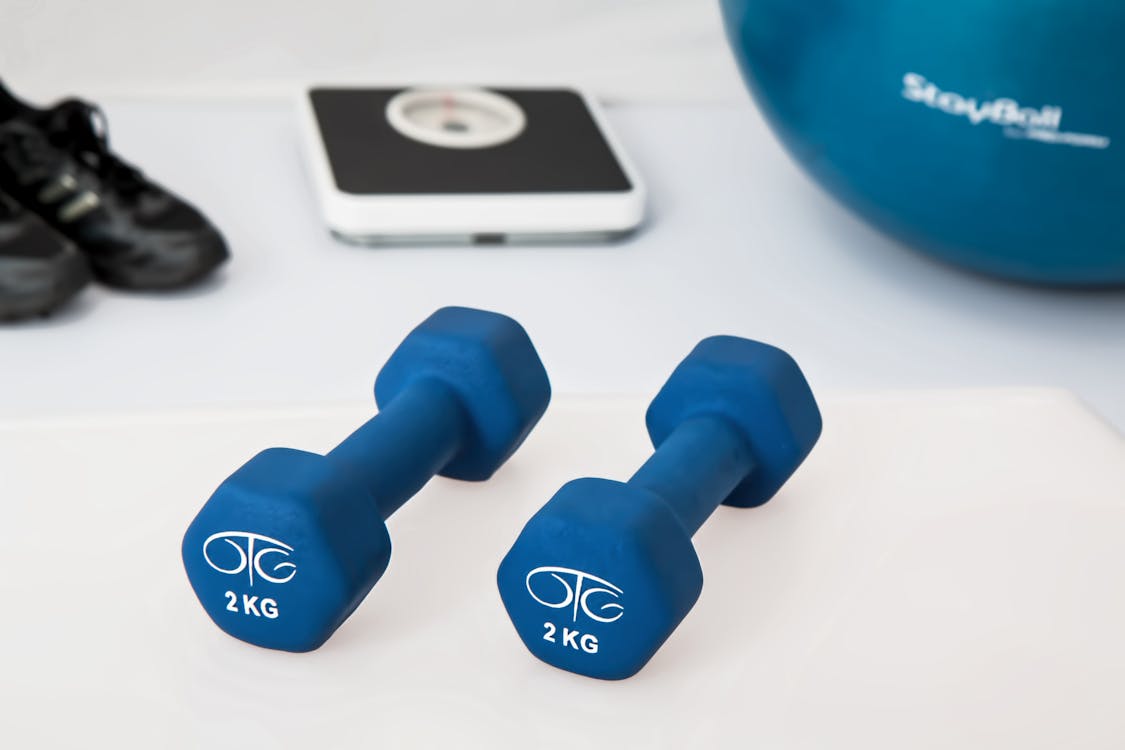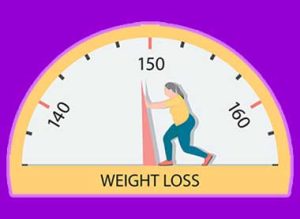
Excess belly fat, often referred to as visceral fat, is not only a cosmetic concern but also a significant health issue that affects millions of people worldwide. The accumulation of fat around the abdominal region can lead to a variety of health implications, ranging from increased risks of chronic diseases to decreased overall well-being. As individuals strive to achieve a healthier and fitter lifestyle, understanding the impact of belly fat loss exercise becomes paramount.
Belly Fat And Its Health Implications:
Belly fat, or visceral fat, is a type of fat that surrounds the organs in the abdominal cavity. Unlike subcutaneous fat, which lies just beneath the skin, visceral fat is deeply embedded and can negatively affect various bodily functions. Studies have shown that excessive visceral fat is strongly associated with an increased risk of serious health conditions such as heart disease, type 2 diabetes, stroke, and certain cancers.
Moreover, visceral fat is metabolically active, releasing inflammatory substances into the bloodstream. These substances can interfere with insulin sensitivity, disrupt hormonal balance, and promote chronic inflammation, all of which contribute to further weight gain and health complications. Therefore, tackling belly fat is not merely about achieving a toned physique; it’s an essential step towards improving overall health and well-being.
Importance of Regular Belly Fat Loss Exercise:
When it comes to losing belly fat, regular exercise emerges as a powerful tool in the fight against visceral fat. While spot reduction (targeting fat loss from a specific area) is a common misconception, exercise plays a crucial role in reducing overall body fat, including visceral fat. Engaging in physical activity brings about numerous benefits that go beyond just shedding excess weight.

- Increased Caloric Expenditure: Exercise helps burn calories, creating a calorie deficit that prompts the body to use stored fat for energy. This process gradually reduces body fat, including visceral fat.
- Boosting Metabolism: Regular exercise enhances metabolic rate, leading to more efficient fat burning even at rest. This metabolic boost is particularly beneficial in reducing stubborn belly fat.
- Promoting Muscle Mass: Certain exercises, like strength training, help build lean muscle mass. More muscle mass means a higher resting metabolic rate, contributing to fat loss over the long term.
- Regulating Hormones: Exercise can positively impact hormones related to appetite and fat storage, such as insulin, cortisol, and leptin, which further aids in belly fat reduction.
- Reducing Stress: Physical activity is a natural stress-reliever, and managing stress is crucial for preventing stress-related weight gain and the accumulation of belly fat.
Understanding the implications of belly fat and recognizing the importance of regular exercise are vital steps in embarking on a journey towards a healthier and more fulfilling life. While exercise alone may not target belly fat exclusively, its role in overall fat loss and improved health cannot be overstated. In the following sections of this article, we will delve into effective belly fat loss exercises that can lead to sustainable and transformative results. So let’s lace up our sneakers and take the first stride towards a healthier and happier you.
Creating a Belly Fat Loss Exercise Plan:
Setting Realistic and Achievable Goals:
Before diving into any exercise regimen, it’s essential to set clear, realistic, and achievable goals. Avoid setting overly ambitious targets that might lead to frustration or burnout. Instead, focus on specific and measurable goals. For example, aim to reduce your waist circumference by a certain number of inches or to perform a specific number of minutes of exercise per week. Having clear goals will help you stay motivated and track your progress throughout your journey.
Assessing Individual Fitness Levels and Limitations:
Understanding your current fitness level is vital to design an exercise plan that suits your individual needs. Consider factors such as your age, medical history, existing fitness level, and any physical limitations or injuries. If you’re new to exercise or have health concerns, it’s prudent to consult with a healthcare professional or a certified fitness trainer before starting your belly fat loss exercise plan. They can provide personalized guidance and ensure that the exercises you choose are safe and appropriate for your condition.
Choosing the Right Belly Fat Loss Exercise:
When it comes to belly fat loss, a combination of cardiovascular, high-intensity interval training (HIIT), strength training, and core-focused exercises works synergistically to maximize results. Here are some effective exercise types to consider incorporating into your plan:

Cardiovascular Exercises:
Cardio exercises elevate your heart rate and increase calorie burn, making them crucial for overall fat loss, including belly fat. Engage in activities such as:
Running and Jogging: Simple yet effective, running or jogging can be done outdoors or on a treadmill, catering to different fitness levels.
Cycling: Whether on a stationary bike or cycling outdoors, this low-impact exercise is excellent for burning calories and toning the lower body.
Jump Rope Workouts: Jumping rope is a fun and efficient way to engage your entire body, improve cardiovascular health, and burn calories.
High-Intensity Interval Training (HIIT):
HIIT involves short bursts of intense exercises followed by brief recovery periods. This style of training helps maximize calorie burn and boosts the body’s fat-burning capabilities. Some HIIT exercises to consider are:
High Knees: Running in place with your knees lifted as high as possible for short bursts of time.
Burpees: A full-body exercise that involves a combination of squat, plank, and jump.
Mountain Climbers: A dynamic exercise that engages your core and increases heart rate.
Strength Training:
Building lean muscle mass through strength training not only contributes to fat loss but also tones and strengthens your body. Focus on compound movements that engage multiple muscle groups, such as:
Squats: A foundational lower body exercise that targets glutes, thighs, and core.
Deadlifts: An effective exercise for targeting the lower back, glutes, and hamstrings.
Push-Ups: A classic bodyweight exercise that works the chest, shoulders, triceps, and core.
Core Exercises:
Strengthening the core is essential for toning abdominal muscles and supporting overall posture. Some core exercises include:
Planks: An isometric exercise that engages the core and stabilizing muscles.
Russian Twists: A seated or standing exercise that targets the obliques.
Bicycle Crunches: An effective move to engage both upper and lower abdominal muscles.
Yoga and Pilates:
How these exercises aid in belly fat loss and toning:
Yoga and Pilates are well-known for their numerous health benefits, including their contribution to belly fat loss and toning. Both practices emphasize body awareness, breath control, and proper alignment, which engage and strengthen the core muscles. A strong core is essential for supporting the spine and improving posture, helping to create a leaner and more toned appearance.
Moreover, yoga and Pilates promote relaxation and reduce stress, which can aid in reducing cortisol levels—a hormone linked to belly fat accumulation. By reducing stress, these practices indirectly support the body’s efforts to shed excess fat.
Specific yoga and Pilates poses for targeting abdominal muscles:

Incorporate the following yoga and Pilates poses into your belly fat loss exercise plan to target the abdominal muscles effectively:
Boat Pose (Navasana): This yoga pose engages the entire core, helping to tone and strengthen the abdominal muscles.
Plank Pose: Both yoga and Pilates include variations of the plank pose, which challenge the core muscles and improve stability.
Cobra Pose (Bhujangasana): This yoga pose stretches the abdominal muscles while also strengthening the back muscles.
Pilates Hundred: This classic Pilates exercise targets the deep core muscles, enhancing overall core strength and stability.
Leg Pull Front (Pilates): This exercise targets the abdominal muscles and also engages the shoulders and arms.
Downward Dog (Adho Mukha Svanasana): Though primarily a yoga pose, it also engages the core and stretches the abdominal muscles.
By incorporating yoga and Pilates into your belly fat loss exercise routine, you can experience improved flexibility, increased strength, and reduced stress, all of which contribute to a healthier body composition.
Conclusion:
In conclusion, a comprehensive belly fat loss exercise plan should include a variety of effective exercises. Cardiovascular exercises like running, cycling, and jump rope workouts help burn calories and reduce overall body fat. High-Intensity Interval Training (HIIT) provides an extra fat-burning boost and can be customized to suit beginners. Strength training, with a focus on core exercises and compound movements, builds lean muscle mass and increases the body’s metabolic rate. Additionally, yoga and Pilates contribute to belly fat loss and toning by strengthening the core, reducing stress, and enhancing overall well-being.
Remember that consistency, dedication, and a balanced approach that combines exercise with a healthy diet are key to achieving sustainable belly fat loss and overall health improvement. Always listen to your body, start at your own fitness level, and gradually progress to more challenging workouts. With patience and determination, you can embark on a successful journey towards a fitter and healthier you.
By incorporating a variety of exercises into your belly fat loss exercise plan, you can prevent boredom and continuously challenge your body. Remember to progress gradually, allowing your body time to adapt and avoid overtraining. Regular physical activity, combined with a balanced diet, will set you on the path towards achieving your belly fat loss goals and improving your overall health and well-being.
Herbomass




